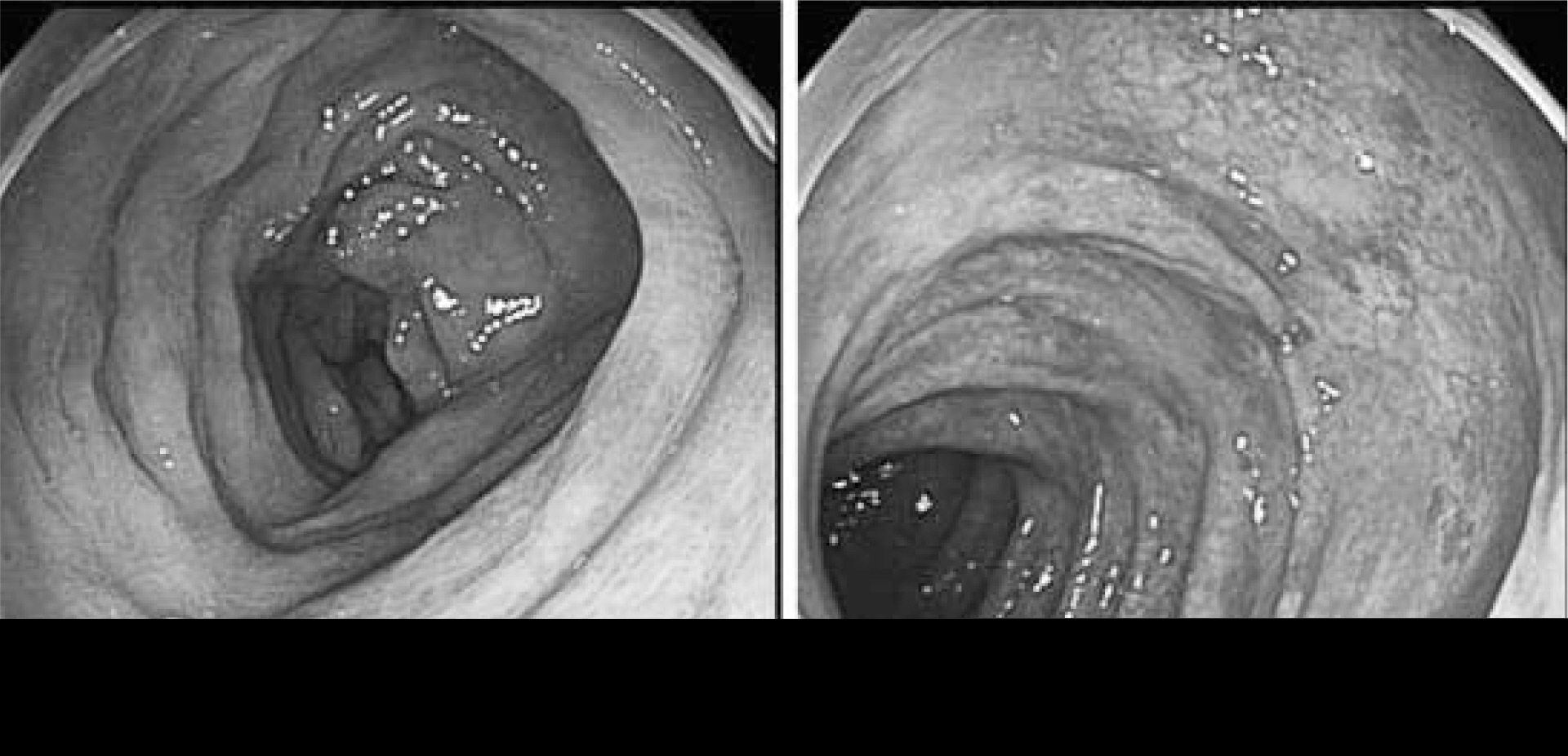A Case of Ischemic Colitis Related with Usual Dosage of Ibuprofen in a Young Man
Article information
Abstract
Abstract
Ischemic colitis is a medical condition in which inflammation and injury of the large intestine result from inadequate blood supply. Although unoommon in the general p㢌pulation, ischemic colitis occurs with greater frequency in the elderly, and is the most common form of bowel ischemia. Other possible causes include medications s䴸ch as NSAIDs(non-steroidal antiinflammatory drugs), oral contraceptives, diuretics and others. In recent years, many of NSAID use in young age can cause ischemic lesions, but it is not common. Here we report a case of ischemic colitis in a 31-year-old man who had no specific medical history except taking 200mg of ibuprofen three times a day for seven days. It suggests the importance of precise history taking, including medications usage such as NSAIDs and other risk factors.
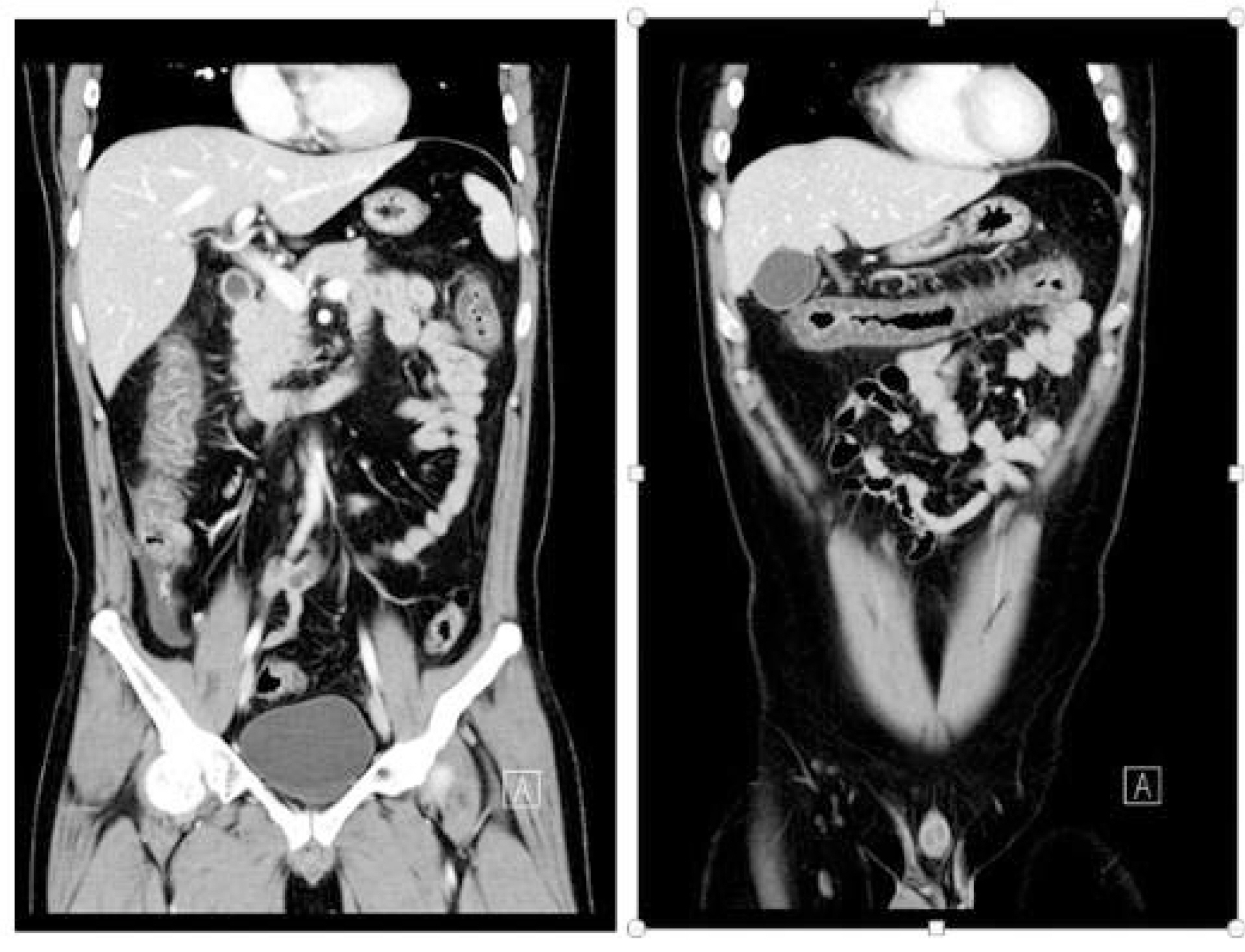
Abdominal comp䴸terized tomography showed the wall thickening of the colons, from ascending to transverse colon, and a small amᄋ䴸nt of the fluid in the right lower abdomen. The scans are otherwise 䴸nremarkable.
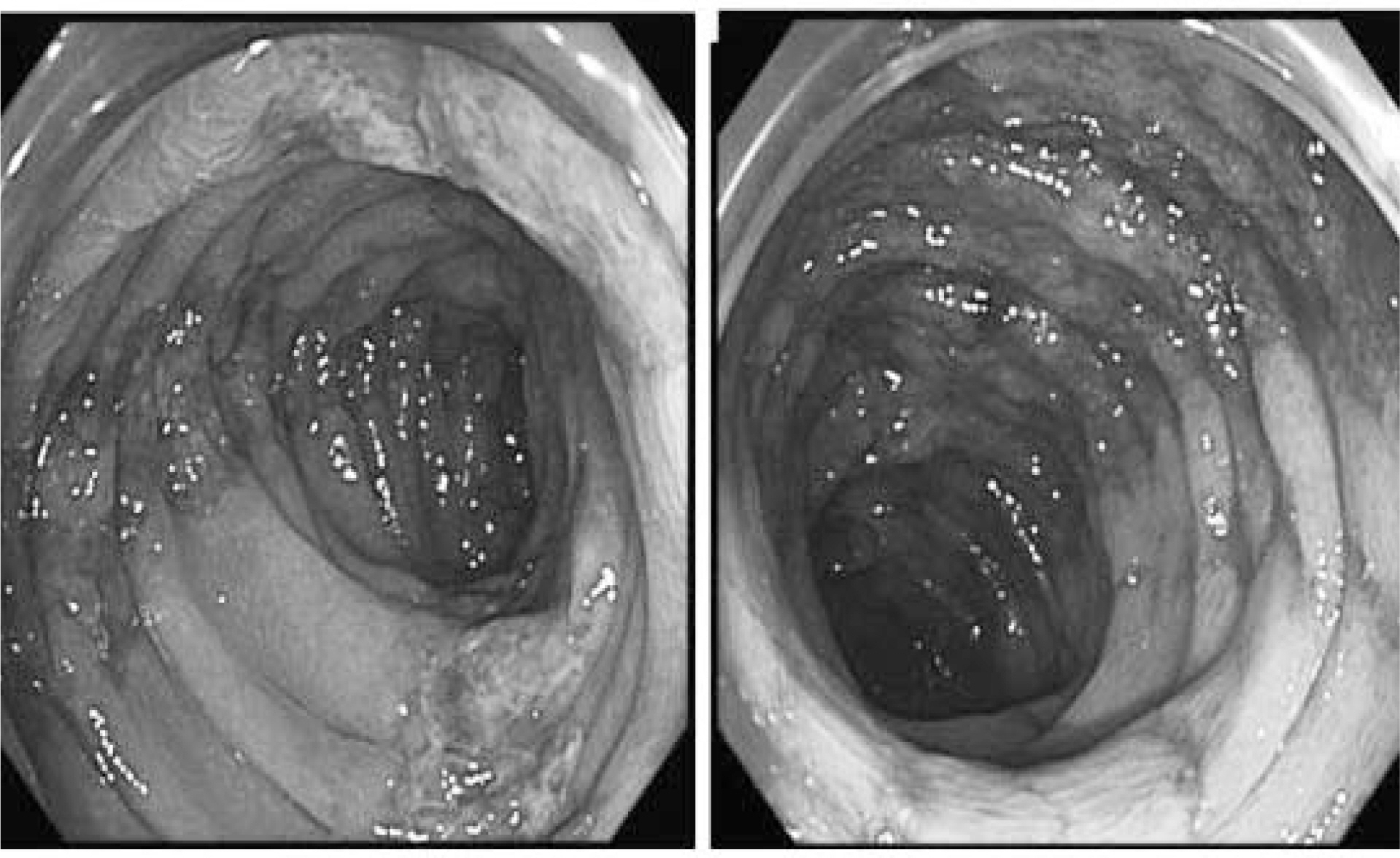
C㢌onoscopy showing hyperemic granular and easy friable m䴸cosa, with linear 䴸lcers running along the longit䴸dinal axis from ascending to transverse c㢌on.
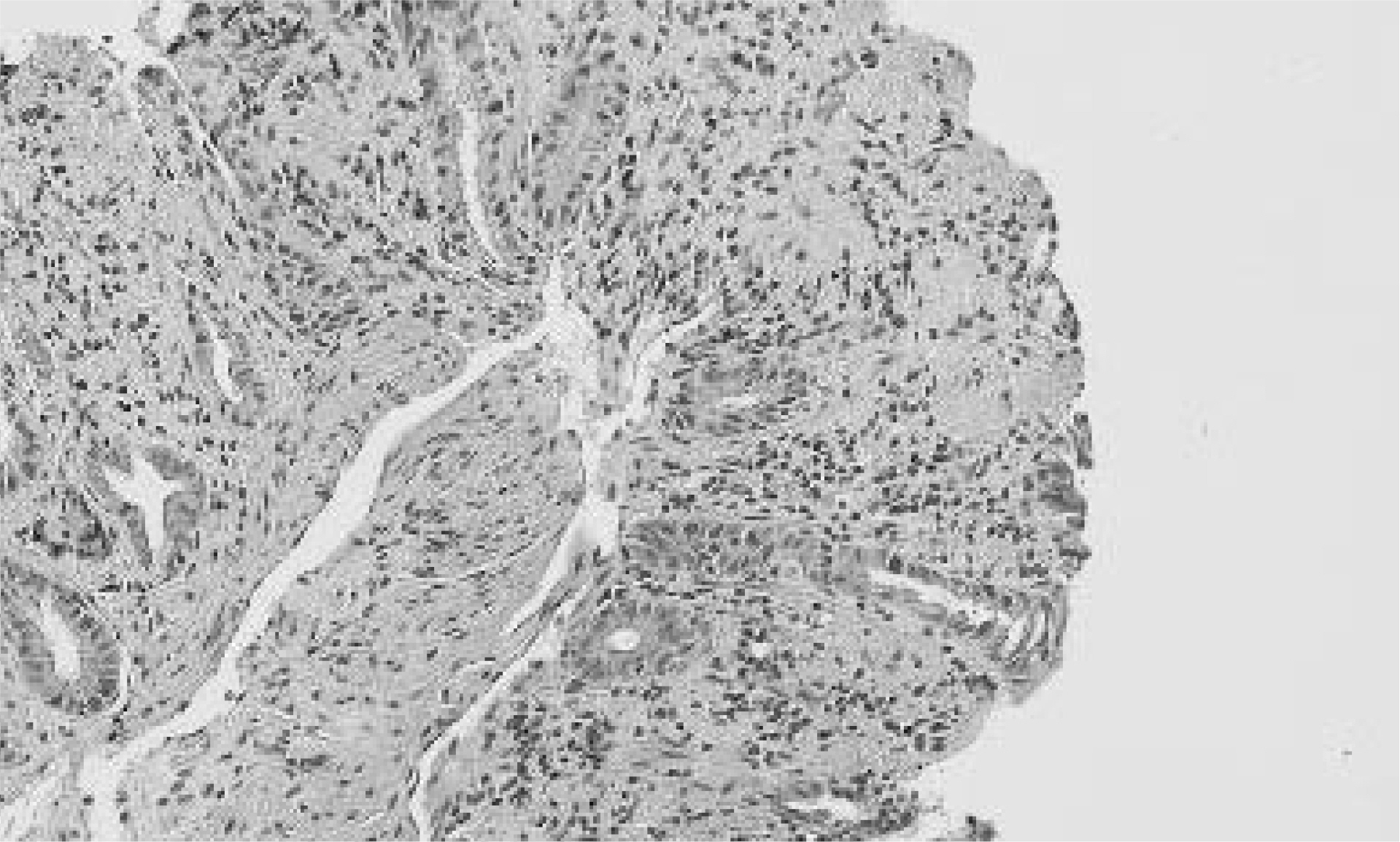
C㢌onscopic biopsy showing loss of the s䴸rface epitheli䴸m, s䴸perficial m䴸cosal necrosis, and hemorrhagic foci in the lamina propria and lymhocyte cell infiltration.
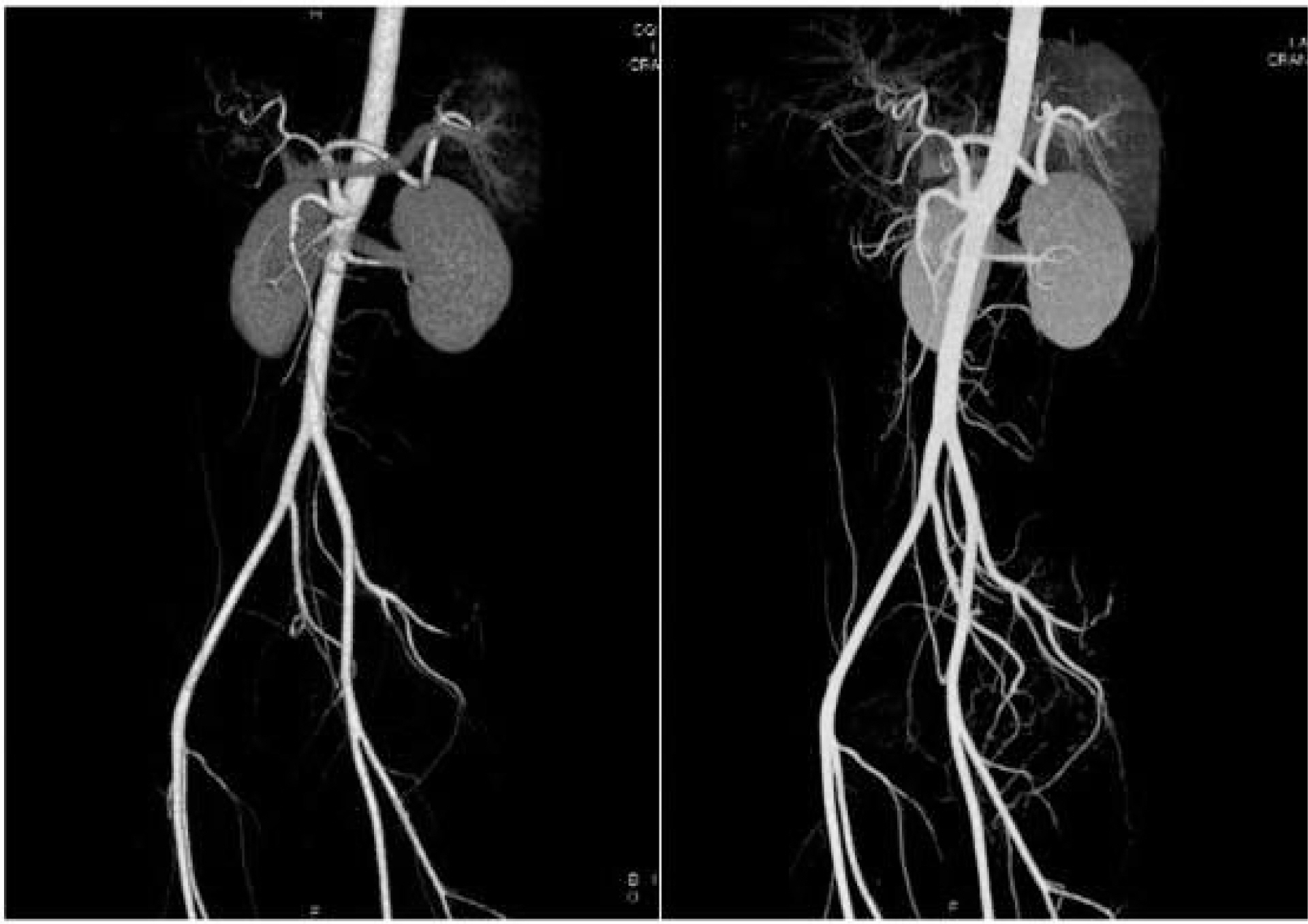
Abdominal angiographic comp䴸terized tomography showing patent mesenteric vessels and no other abnormal findings
